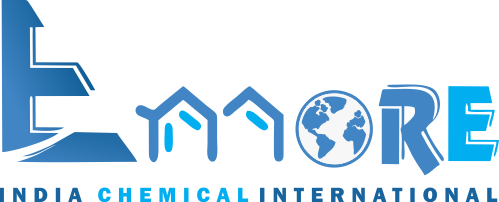Iron oxides Supplier Distributor Manufacturer in chennai Taminadu india
Iron oxides are chemical compounds composed of iron and oxygen. All together, there are sixteen known iron oxides and oxyhydroxides.
Iron oxides and oxide-hydroxides are widespread in nature, play an important role in many geological and biological processes, and are widely used by humans, e.g., as iron ores, pigments, catalysts, in thermite (see the diagram) and hemoglobin. Common rust is a form of iron(III) oxide. Iron oxides are widely used as inexpensive, durable pigments in paints, coatings and colored concretes. Colors commonly available are in the "earthy" end of the yellow/orange/red/brown/black range. When used as a food coloring, it has E number E172.
Methanogenesis replacement by iron oxide reduction
Under conditions favoring iron reduction, the process of iron oxide reduction can replace at least 80% of methane production occurring by methanogenesis. This phenomenon occurs in a nitrogen-containing (N2) environment with low sulfate concentrations. Methanogenesis, an Archaean driven process, is typically the predominate form of carbon mineralization in sediments at the bottom of the ocean. Methanogenesis completes the decomposition of organic matter to methane (CH4). The specific electron donor for iron oxide reduction in this situation is still under debate, but the two potential candidates include either Titanium (III) or compounds present in yeast.
Hydroxyl radical formation
On the other hand when airborne, iron oxides have been shown to harm the lung tissues of living organisms by the formation of hydroxyl radicals, leading to the creation of alkyl radicals. The following reactions occur when Fe2O3 and FeO, hereafter represented as Fe3+ and Fe2+ respectively, iron oxide particulates accumulate in the lungs.
The formation of the superoxide anion (O2• –) is catalyzed by a transmembrane enzyme called NADPH oxidase. The enzyme facilitates the transport of an electron across the plasma membrane from cytosolic NADPH to extracellular oxygen (O2) to produce O2• –. NADPH and FAD are bound to cytoplasmic binding sites on the enzyme. Two electrons from NADPH are transported to FAD which reduces it to FADH2. Then, one electron moves to one of two heme groups in the enzyme within the plane of the membrane. The second electron pushes the first electron to the second heme group so that it can associate with the first heme group. For the transfer to occur, the second heme must be bound to extracellular oxygen which is the acceptor of the electron. This enzyme can also be located within the membranes of intracellular organelles allowing the formation of O2• – to occur within organelles.
